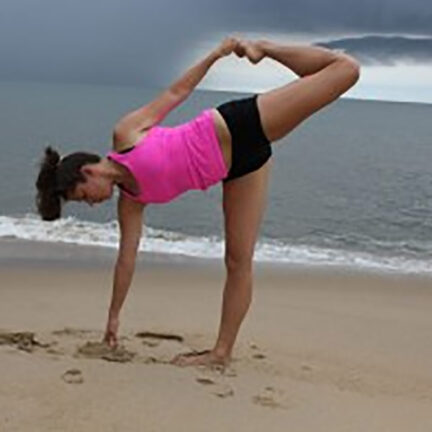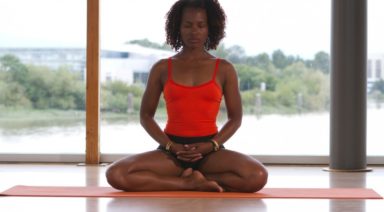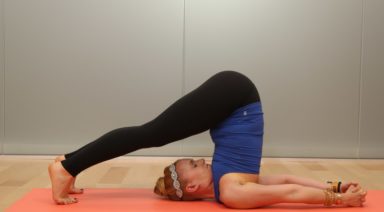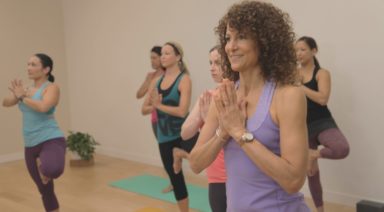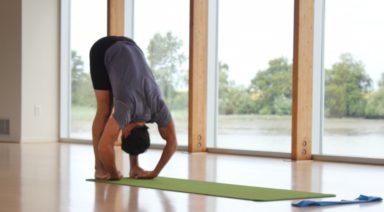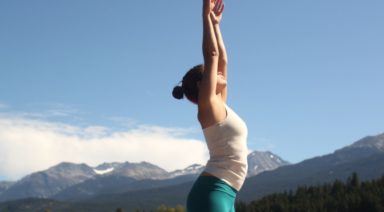Pranayama Breath Control: The Key to Maximizing Your Energy

Yoga is an ancient practice that can take many different forms. From devotion, to physical movement, to the quest for knowledge, yoga is as unique as all of its various practitioners. Breath control has been and continues to be a large part of yoga. It is believed that breath control not only enhances clarity but, helps to restore the body’s natural flow of energy. In yoga there are more forms of breath control than you might imagine. The word pranayama can be broken down into two smaller words. The first word, “prana”, is the name for the life force or energy that flows through the body. The second half of pranayama is “ayama” which means extension or control. Alternately, the Sanskrit word “pra” also means before, or “to breathe”. This article will explore some of its forms, such as Samavrtti, Ujjayi, Kumbhaka, Anuloma Viloma, Kapalabhati, and Sithali. Although their names might sound complicated these breathing techniques are easy to practice and have varying degrees of mastery – much like yoga itself.
Samavrtti: The first type of breath control is the most normal and well known to every person that walks this Earth. Samavrtti in Sanskrit means “same action”. This is a steady even breath where the inhale matches or is equal to the exhale in duration. This is a slow and steady breath, the breath of relaxation. To begin practicing this form of breath control, inhale for four counts and then exhale for four counts. This action is believed to calm the mind and create a sense of balance.
Ujjayi: The next form of breath control is the most commonly practiced in yoga. Ujjayi breath means “victorious breath” in Sanskrit and is sometimes called the “ocean breath.” Ujjayi breath is an audible breath. This is formed by partially closing the epiglottal passage or slightly closing the throat. Much like Samavrtti, this breath is even. To practice Ujjayi close your mouth and breath in slowly and continuously for four counts. Exhale in the same manner, keeping the breath in through the nose. This form of breath control is said to help tone the internal organs, increase body health, improve concentration, and more.
Kumbhaka: This is the practice of holding one’s breath, which is where this form draws its name. Kumbhaka in Sanskrit means “to retain the breath”. Continuing to build on the pranayama previously described, begin with Ujjayi. Once you have established a comfortable rhythm, hold your breath for four to eight counts in between every four breaths. In the beginning your Kumbhaka or retention should start off shorter. As you become more practiced in this art, begin increasing the retention. Also one may begin to reduce the number of breaths in between the retentions. Kumbhaka is believed to strengthen the diaphragm, restore energy and cleanse the respiratory system.
Anuloma Viloma: This form of pranayama might look a bit funny to us Western practitioners of yoga but it is quite beneficial. Anuloma Viloma means Alternate Nostril Breathing in Sanskrit. Much like its name implies, practitioners use their right hand to alternate closing your different nostrils. The first step to learning how to practice this form of breath control is the Vishnu Mudra or hand position with the index and middle fingers curled. Lightly press your right thumb on the outside of the right nostril and inhale only through your left nostril. Keep your mouth closed. Close your left nostril with your ring finger and hold your breath momentarily. Release your thumb and exhale through the right nostril. Repeat the process inhaling through the right nostril. Start slowly with a low number of cycles and then progress from there. This form of breath control is believed to promote the flow of energy, as well as lower the heart rate and relieve stress.
Kapalabhati: Also known as “The Shining Skull,” this type of pranayama is a little bit different from those we have previously explored. Kapalabhati incorporates a rhythmic action by pumping your abdominal muscles on the exhales. Loosen up your abdominal muscles before beginning this practice. To begin, fill your lungs and then push all of the air out in a quick thrust. Inhalation automatically follows, creating this rhythm of breathing. Upon the exhale you have completed one cycle. When starting this practice begin with a low number of cycles or repetitions such as 10. Continue to build from there working up towards four rounds of twenty cycles of breath. This pranayama is thought to strengthen the diaphragm, restore energy and cleanse the respiratory system.
Sithali: Our final form of pranayama for this article, sithali, is roughly translated as “The cooling breath.” This form differs from other types of pranayama as the inhale is drawn through the mouth. Begin by curling your tongue and then slightly stick it out. Draw your breath in through your curled tongue, retain the breath closing your mouth and exhale through your nose. Repeat this process anywhere between five to ten cycles. This type of prana energy is believed to cool the body while providing a feeling of wellness.
**Contraindications: Some pranayama techniques such as breath retention or sharp, forceful breathing may not be safe during pregnancy.
**References: Much of this information comes from the wonderful resource of “Anatomy of Yoga” by Dr. Abigail Ellsworth
5 Reasons to Practice Breath of Fire Yoga

Kapalabhati Pranayama or “Cleaning Breath” is an intermediate to advanced pranayama that consists of short, powerful exhales and passive inhales. This practice is also known as the “Breath of Fire.” The exercise purifies the lungs and nasal passages. It is a powerful, one of a kind breathing exercise that will help the entire body.
Kapalabhati helps to make the motions of your diaphragm very easy and controlled. This helps it to discard the muscle cramps present in bronchial tubes. A lot of force is used to do this pranayama. While exhaling, the process is very strong and while inhaling, the process is very calming. It is a very energizing technique, and when done correctly it will reboot all your muscles. It is also a cleansing technique that places emphasis on cleaning the air passages and blockages in the chest.
Benefits
Cleanse Yourself of Toxic Air
Kapalabhati clears the body from the constant intake of toxins, thus detoxifying it. This technique helps to replace any toxic air with fresh air. The breathing mainly takes place from the abdomen, as opposed to the chest, and this specifically is what helps to remove the toxic air. Kapala means “the skull” and bhati means “brings lightness.” Breathing in this way lightens your skull by extracting problems like sinusitis. This is an invigorating and energizing practice as it fills your stuffy skull with fresh air.
The practice also improves bowel movements which rids the body of the many diseases.
Excellent for Respiratory Problems
It is also one of the best exercises for asthma patients and people suffering from respiratory problems. This stimulating breath can do wonders for every single tissue in your body. The breathing technique will invigorate your spine.
Increases Blood Circulation
It is also useful for maintaining blood pressure. The abdominal organs also become strengthened from the pressure applied to these organs while breathing and exhaling. It increases the blood circulation due to fresh supply of blood. It is also useful for removing impurities from the blood.
Tones Your Abdomen
The abdominal area is toned with the help of this breathing technique. It helps clear the entire nervous system which proves to be very useful in making the body fit.
Helps with Decision Making
A sense of calmness is also achieved due to the lightness of the skull. Kapalabhati helps one to think better and make decisions quickly while also keeping the mind alert. This is a wonderful breathing technique to help the mind and soul, as it helps to awaken the spiritual power which heals many problems facing many of us today.
Contraindications
It should also be noted that Kapalabhati Pranayama is not recommended for those who suffer from cardiac problems, hernia and spinal disorders. In addition, those who suffer from severe respiratory infections, colds and nasal obstruction should not perform this breathing and cleansing technique. Most physicians usually ask people suffering from high blood pressure and diabetes to refrain from performing this breathing technique. Those with abdominal ulcers should also avoid performing the technique. If you are pregnant, you should not practice this type of breathing exercise.
Since there are some Kapalabhati risks it is best to perform it only after consulting with a qualified yoga instructor who has practiced this breathing technique and is familiar with it.

